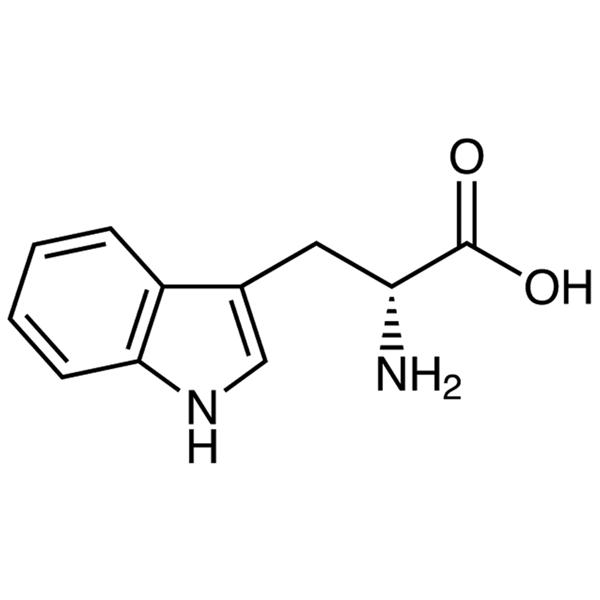D-Tryptophan CAS 153-94-6 (H-D-Trp-OH) Assay 98.5~101.0% Factory
Shanghai Ruifu Chemical Co., Ltd. is the leading manufacturer of D-Tryptophan (H-D-Trp-OH) (CAS: 153-94-6) with high quality. Ruifu Chemical supplys a series of amino acids and derivatives. We can provide worldwide delivery, competitive price, small and bulk quantities available. Purchase D-Tryptophan, Please contact: alvin@ruifuchem.com
| Chemical Name | D-Tryptophan |
| Synonyms | H-D-Trp-OH; D-(+)-Tryptophan; Dextro-(+)-Tryptophan; (R)-Tryptophan; (R)-(+)-2-Amino-3-(3-Indolyl)propionic Acid; (R)-α-Amino-3-Indolepropionic Acid; (R)-α-Aminoindole-3-Propanoic Acid |
| Stock Status | In Stock, Production Capacity 35 Tons per Month |
| CAS Number | 153-94-6 |
| Molecular Formula | C11H12N2O2 |
| Molecular Weight | 204.23 g/mol |
| Melting Point | 282.0~285.0℃(dec.)(lit.) |
| Density | 1.362 |
| Solubility | Sparingly Soluble in Water, Slightly Soluble in Ethanol (96%) |
| Storage Temp. | Cool & Dry Place |
| COA & MSDS | Available |
| Category | Amino Acids and Derivatives |
| Brand | Ruifu Chemical |
| Items | Inspection Standards | Results |
| Appearance | White Crystalline Powder | Complies |
| Specific Rotation [α]20/D | +30.0° to +33.0° (C=1, H2O) |
-33.8° |
| State of Solution | ≥95.0% | Complies |
| Melting Point | 282.0~285.0℃ | 282.8~284.2℃ |
| Chloride (Cl) | ≤0.020% | <0.020% |
| Ammonium (NH4) | ≤0.020% | <0.020% |
| Sulfate (SO4) | ≤0.020% | <0.020% |
| Iron (as Fe) | ≤20ppm | <20ppm |
| Heavy Metals (as Pb) | ≤10ppm | <10ppm |
| Arsenic (As2O3) | ≤1ppm | <1ppm |
| Other Amino Acids | Conforms | Conforms |
| Loss on Drying | ≤0.20% | 0.15% |
| Residue on Ignition | ≤0.10% | 0.06% |
| Assay | 98.5%~ 101.0% | 99.6% |
| L-Tryptophan | ≤1.00% | 0.79% |
| pH | 5.4~6.4 | 6.3 |
| IR Spectrum | In Accordance With the Standard | Complies |
| Conclusion | The product has been tested & complies with the given specifications | |
Package: Fluorinated Bottle, Aluminium foil bag, 25kg/Cardboard Drum, or according to customer's requirement.
Storage Condition: Store in sealed containers at cool, dry and ventilated warehouse away from incompatible substances. Protect from light and moisture.
Acidity
Take 1g of this product, add 50ml of water to dissolve, and measure according to law (General Rule 5.4). The pH value should be 5.4~6.4.
Transmittance of solution
take 0.5g of this product, add 2mol/L hydrochloric acid solution 20ml to dissolve, according to ultraviolet-visible spectrophotometry (General rule 0401), measure the transmittance at 430nm wavelength, not less than 95.0%.
Chloride
Take 0.25g of this product and check it according to law (General rule 0801). Compared with the control solution made of 0.02% of standard sodium chloride solution, it should not be more concentrated ().
Sulfate
Take l.0g of this product and check it according to law (General rule 0802). Compared with the control solution made of 0.02% of standard potassium sulfate solution, it should not be more concentrated ().
Ammonium Salt
Take 0.10g of this product and check it according to law (General rule 0808). Compared with the control solution made of 0.02% of standard ammonium chloride solution, it shall not be deeper ().
Other Amino Acids
Take 0.30g of this product, put it in a 20ml measuring flask, add 1 mol/L hydrochloric acid solution 1 ml and water to dissolve, dilute with water to the scale, shake well, as a test solution; take 1 ml accurately, put it in a 200ml measuring flask, dilute it to scale with water, shake well, and use it as a control solution. Take 10mg of tryptophan control and tyrosine control, and put it in the same 25ml measuring flask, 1 ml of 1 mol/L hydrochloric acid solution and an appropriate amount of water were added to dissolve the solution. The solution was diluted to the scale with water and then shaken to form a suitable solution for the system. According to the thin layer chromatography (General 0502) test, absorb the above three solutions each 2 μL, respectively, on the same silica gel G thin layer plate, with n-butanol-glacial acetic acid-water (3:1:1) to spread out, spread out, dry, spray with ninhydrin in acetone solution (1-50), heat at 80℃ until the * point appears, and view immediately. The control solution should show a clear spot, and the system applicable solution should show two completely separated spots. If the test solution shows impurity spots, the color should not be deeper (0.5%) than the main spot of the control solution.
Loss on Drying
Take this product, dry at 105℃ for 3 hours, loss of weight shall not exceed 0.2% (General rule 0831).
Residue on Ignition
Take 1.0g of this product and check it according to law (General rule 0841). The residue left shall not exceed 0.1%.
Iron Salt
Take this product 1.0g after burning and ashing, add hydrochloric acid (2ml) to the residue, dry it on a water bath, then add dilute hydrochloric acid (4ml), dissolve it in slight heat, add water (30ml) and ammonium persulfate (50mg), and check it according to law (General rule 0807), it should not be deeper (0.002%) than the control solution made of standard iron solution.
Heavy Metals
The residue left under the item of taking the ignition residue shall not contain more than 10 parts per million of heavy metal when examined by law (General Principles 0821, Law II).
Arsenic Salt
take 2.0g of this product, add 5ml of hydrochloric acid and 23ml of water to dissolve, check according to law (General rule 0822 first law), should comply with the provisions (0.0001%).
Bacterial Endotoxin
take this product, add human endotoxin test water, and heat to 80℃ to dissolve it, check according to law (General 1143), each lg of tryptophan containing endotoxin should be less than 50EU. (For injection)
Content Determination
Take this product about 0.15g, precision weighing, add anhydrous formic acid 3ml dissolved, add glacial acetic acid 50ml, according to the potential titration method (General rule 0701), with hydrochloric acid titration solution (0.1 mol/L) titration, and the results of the titration were corrected with a blank test. Each 1 ml of perchloric acid titration solution (0.1 mol/L) corresponds to 20.42mg of C11H12N2O2.
How to Purchase? Please contact Dr. Alvin Huang: sales@ruifuchem.com or alvin@ruifuchem.com
15 Years Experience? We have more than 15 years of experience in the manufacture and export of a wide range of high quality pharmaceutical intermediates or fine chemicals.
Main Markets? Sell to domestic market, North America, Europe, India, Korea, Japanese, Australia, etc.
Advantages? Superior quality, affordable price, professional services and technical support, fast delivery.
Quality Assurance? Strict quality control system. Professional equipment for analysis include NMR, LC-MS, GC, HPLC, ICP-MS, UV, IR, OR, K.F, ROI, LOD, MP, Clarity, Solubility, Microbial limit test, etc.
Samples? Most products provide free samples for quality evaluation, shipping cost should be paid by customers.
Factory Audit? Factory audit welcome. Please make an appointment in advance.
MOQ? No MOQ. Small order is acceptable.
Delivery Time? If within stock, three days delivery guaranteed.
Transportation? By Express (FedEx, DHL), by Air, by Sea.
Documents? After sales service: COA, MOA, ROS, MSDS, etc. can be provided.
Custom Synthesis? Can provide custom synthesis services to best fit your research needs.
Payment Terms? Proforma invoice will be sent first after confirmation of order, enclosed our bank information. Payment by T/T (Telex Transfer), PayPal, Western Union, etc.
Hazard Symbols Xi - Irritant
Risk Codes
R36/37/38 - Irritating to eyes, respiratory system and skin.
R41 - Risk of serious damage to eyes
R37/38 - Irritating to respiratory system and skin.
R22 - Harmful if swallowed
Safety Description
S24/25 - Avoid contact with skin and eyes.
S36/37/39 - Wear suitable protective clothing, gloves and eye/face protection.
S36 - Wear suitable protective clothing.
S26 - In case of contact with eyes, rinse immediately with plenty of water and seek medical advice.
WGK Germany 3
RTECS YN6129000
FLUKA BRAND F CODES 8
TSCA Yes
HS Code 2922491990
Hazard Class Irritant
D-Tryptophan (H-D-Trp-OH) (CAS: 153-94-6) is the D-form (non-proteinogenic form) of the amino acid tryptophan. Amino acids and derivatives, used in peptide synthesis, used as an organic synthesis intermediate, pharmaceutical intermediate, food / feed additives, nutritional supplement, biochemical reagent or chemical reagent.
Tryptophan is one of the 20 standard amino acids, as well as an essential amino acid in the human diet. It is encoded in the standard genetic code as the codon UGG. the D-stereoisomer is occasionally found in naturally produced peptides (for example, the marine venom peptide contryphan). The distinguishing structural characteristic of Tryptophan is that it contains an indole functional group. It is an essential amino acid as defined by its growth effects on rats.
D-Tryptophan amino acid, as a non-reactive protein, has special physiological properties. It can be used as a non-nutritive sweeteners, feed additive, plant growth agents in food feed industry and agriculture. In the pharmaceutical industry, it mainly used for the synthesis of various polypeptides, instead of L-Tryptophan peptide drug for half-life extending and reduce the side effects, but it will not resistant to the front body, and it will become important enzyme inhibitor. It can also improve the body's immunity, delayed allergic reactions. Most peptide antibiotic can resistant gram-positive bacteria, Gram-negative bacteria and some, such as Pseudomonas aeruginosa, mycobacteria, fungi, bacteria, pathogens and tumor cells, which have better inhibit and kill ability.
D-Tryptophan can be used for the synthetic of semi-synthetic antibiotics, for which pharmacological plays an important role for the side chain. The peptide bond is difficult to be β-lactam enzyme action, thus high stability, and has broad antibacterial spectrum, toxicity, hypoallergenic, rapid absorption, high blood concentrations of the drug long duration.
-
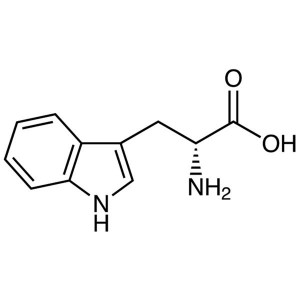
D-Tryptophan CAS 153-94-6 (H-D-Trp-OH) Assay 98...
-
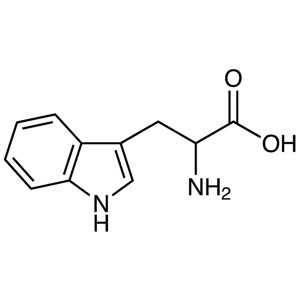
DL-Tryptophan CAS 54-12-6 (H-DL-Trp-OH) Assay >...
-
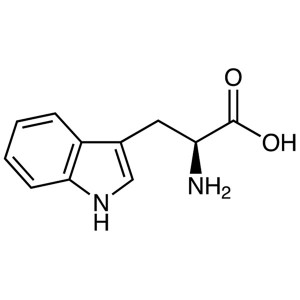
L-Tryptophan CAS 73-22-3 (H-Trp-OH) Assay 98.5~...
-
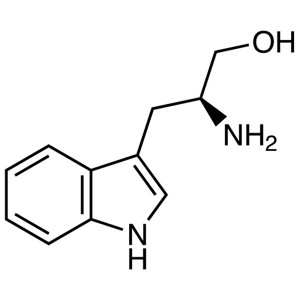
L-(-)-Tryptophanol CAS 2899-29-8 (H-Trp-ol) Pur...
-
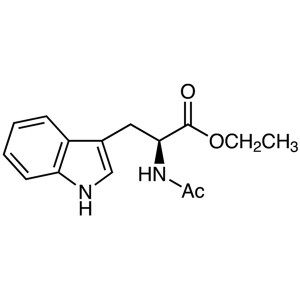
Ac-Trp-OEt CAS 2382-80-1 N-Acetyl-L-Tryptophan ...
-
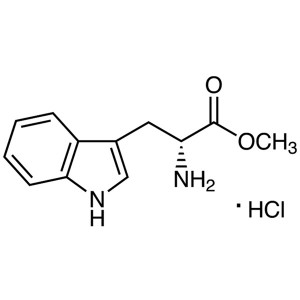
H-D-Trp-OMe·HCl CAS 14907-27-8 D-Tryptophan Met...
-
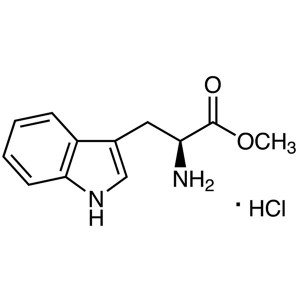
H-Trp-OMe·HCl CAS 7524-52-9 L-Tryptophan Methyl...
-
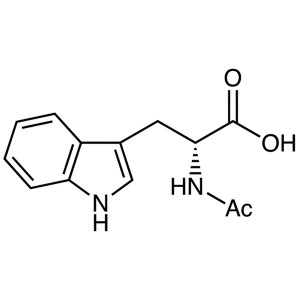
N-Acetyl-D-Tryptophan CAS 2280-01-5 (Ac-D-Trp-O...
-
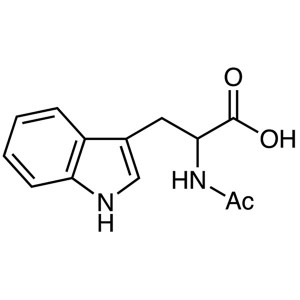
N-Acetyl-DL-Tryptophan CAS 87-32-1 (Ac-DL-Trp-O...
-
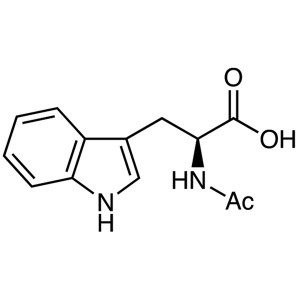
N-Acetyl-L-Tryptophan CAS 1218-34-4 (Ac-Trp-OH)...
-
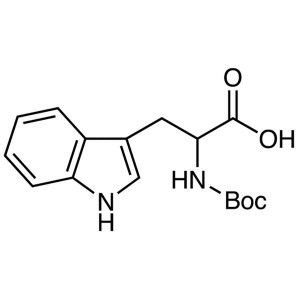
N-Boc-DL-Tryptophan CAS 112525-72-1 (Boc-DL-Trp...

